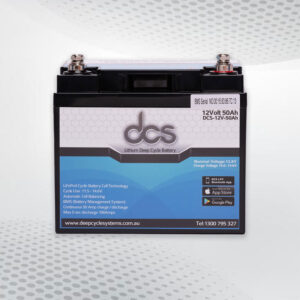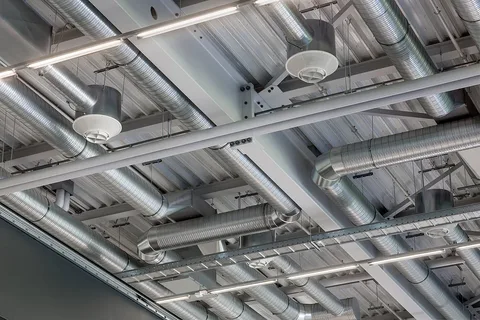In today’s fast-paced world, where energy efficiency and sustainability are more important than ever, understanding the intricacies of battery technology is crucial. One term you’ll often come across is “Deep-Cycle Battery Ah.” But what does it mean, and why is it essential for various applications? In this blog post, we’ll delve into the concept of Deep Cycle Battery Ah and explore why it might be exactly what you need to power your lifestyle or business operations efficiently and sustainably
What Is a Deep-Cycle Battery?
A deep-cycle battery is a type of lead-acid battery engineered to provide a consistent flow of current over an extended period. Unlike car batteries, which deliver a quick burst of energy for starting engines, deep-cycle batteries are designed for sustained power delivery and can be repeatedly discharged and recharged without significant degradation. This makes them ideal for applications such as solar energy systems, recreational vehicles, and marine environments.
Deep-cycle batteries can endure deep discharges, thanks to their robust construction, which helps maintain capacity and longevity. They are commonly found in golf carts, wheelchairs, and other electric vehicles where reliable, long-term power is essential. Furthermore, these batteries are critical in backup power systems for homes and businesses, providing a reliable energy source during power outages. Their ability to be cycled many times without losing performance makes them a preferred choice for off-grid living and remote locations.
Understanding Ampere-hour (Ah) Rating
The Ampere-hour (Ah) rating is a critical specification when evaluating a deep-cycle battery’s capacity. Essentially, it indicates how much current a battery can deliver over a specified time frame, typically measured over 20 hours. For instance, a battery with a 100 Ah rating can provide 5 amperes of current for 20 hours. This rating helps determine how long a battery will last before it needs recharging. Understanding the Ah rating is essential for selecting a battery that meets your specific energy needs.
By knowing the Ah rating, you can ensure the battery will provide adequate power for the required duration of your application. Additionally, considering the Ah rating in conjunction with other factors such as the battery’s discharge rate and temperature performance is crucial. This comprehensive understanding allows you to optimise the battery’s lifespan and efficiency for your specific use case.
Advantages of Using a 120 Amp Deep Cycle Battery
A 120 Amp deep cycle battery brings numerous advantages for various demanding applications. Its substantial power capacity ensures that it can meet the higher energy needs of systems such as solar installations, recreational vehicles, and marine equipment. This higher Ampere-hour rating translates to extended run times, providing a prolonged power supply that is crucial in scenarios where a reliable and sustained energy source is necessary.
Additionally, deep-cycle batteries with a 120 Amp rating generally boast a longer lifespan due to their ability to handle deeper discharges without rapid degradation. This results in enhanced performance and greater longevity, offering excellent value over the battery’s lifetime. Furthermore, a higher Ah rating allows for more efficient energy storage and usage, making it an ideal choice for applications requiring consistent and durable power delivery.
Whether you are using it for renewable energy storage, powering marine systems, or ensuring your recreational vehicle has the energy it needs, a 120 Amp deep-cycle battery provides a robust and reliable solution that meets and often exceeds power requirements. This reliability and efficiency make it an invaluable component in any system demanding sustained and long-term energy output.
Applications of Deep-Cycle Batteries
Deep-cycle batteries are remarkably adaptable and serve a wide array of applications across different sectors. In the renewable energy industry, they are essential for storing solar power, ensuring a steady energy supply even when the sun isn’t shining. Marine environments also benefit significantly from deep-cycle batteries, as they provide a reliable source of power for boats and yachts, keeping onboard systems running smoothly.
For recreational vehicles, these batteries are indispensable, offering a dependable power source for appliances and electronics while travelling. Golf carts and wheelchairs rely on deep-cycle batteries for their consistent power delivery, enabling smooth operation over extended periods. In industrial settings, deep-cycle batteries are used in forklifts and other heavy machinery that require sustained energy output. Off-grid cabins and remote locations often utilise these batteries to store power generated from solar panels or wind turbines, ensuring an uninterrupted energy supply.
Additionally, they are found in backup power systems, providing critical energy during power outages. With their capacity for deep discharges and robust construction, deep-cycle batteries are also used in various emergency systems, including medical equipment, where reliable power is crucial. The versatility and reliability of deep-cycle batteries make them a vital component in numerous applications, supporting sustainable and efficient energy use across diverse fields.
How to Choose the Right Deep Cycle Battery 120 Amp Hours
Selecting the appropriate deep cycle battery 120 amp hours involves a detailed assessment of your specific power needs and how you plan to use the battery. Begin by calculating the total energy consumption of your devices to ensure the battery’s capacity can adequately meet those demands.
Physical Dimensions
Consider the physical dimensions and weight of the battery, as space constraints may play a significant role in your choice. Evaluate the battery’s depth of discharge capabilities to make certain it can handle the demands of your particular application without degrading rapidly. It’s also wise to look for batteries from reputable manufacturers known for quality and durability.
Warranty Terms
Warranty terms and customer reviews can provide insight into the battery’s real-world performance and longevity. Additionally, ensure the battery is compatible with your existing system and charging equipment.
Safety Features
Safety features such as built-in protection against overcharging and short-circuiting can also be important factors. Keep an eye out for maintenance requirements to gauge how much upkeep will be necessary to keep the battery in top condition. By carefully considering these factors, you can make an informed decision that best suits your energy requirements and operational conditions.
Maintenance Tips for Prolonging Battery Life
Proper upkeep of your deep-cycle battery can significantly extend its operational lifespan. Start by regularly checking the water levels and topping up with distilled water when necessary to keep the plates fully submerged. Clean the battery terminals to prevent corrosion, using a mix of bicarbonate of soda and water if you notice any build-up. Avoid letting the battery discharge completely too often, as this can lead to sulphation, a condition that deteriorates battery performance.
Ensure the battery is stored in a cool, dry environment to prevent overheating and other temperature-related issues. Charge the battery regularly, even if it’s not in use, to maintain its health and capacity. Inspect the battery case for any signs of damage or leakage, and address issues promptly to prevent further complications. Use a compatible charger that matches the battery’s specifications to avoid overcharging or undercharging, which can harm the battery’s internal components.
When handling the battery, ensure it is secure and protected from excessive vibrations or physical shocks. Additionally, avoid mixing old and new batteries in the same system to prevent imbalanced charging and discharging cycles. By following these maintenance guidelines, you can ensure your deep-cycle battery delivers reliable performance over an extended period.
Environmental Benefits of 120 Amp Hour Deep Cycle Battery
Deep-cycle batteries, particularly those with a 120 Amp hour deep cycle battery, play a crucial role in advancing environmentally friendly practices. When integrated with renewable energy sources like solar panels, these batteries enable efficient energy storage, thereby decreasing dependency on non-renewable resources and minimising carbon emissions. Their capacity to store surplus energy generated during peak sunlight hours ensures a consistent power supply, reducing the need for fossil fuel-based backup systems.
Another significant environmental advantage is the recyclability of deep-cycle batteries. Many components, such as lead and plastic, can be reclaimed and reused in new batteries, thus lessening the environmental impact of waste. The process of recycling not only conserves raw materials but also reduces the energy required for manufacturing new batteries, contributing to a more sustainable production cycle.
Moreover, the use of deep-cycle batteries in electric vehicles and other green technologies supports a broader shift towards sustainable energy solutions. By providing reliable power for these applications, they help reduce the overall carbon footprint and promote cleaner air quality. Additionally, advancements in battery technology have led to improved efficiency and longer lifespans, further enhancing their environmental benefits. As a result, adopting 120 Amp-hour deep-cycle batteries can significantly contribute to the reduction of environmental pollutants and the promotion of sustainable energy practices.
Common Mistakes to Avoid with Deep-Cycle Batteries
Improper handling and maintenance can significantly shorten the lifespan of your deep-cycle battery. One frequent mistake is letting the battery discharge completely too often, which can lead to sulphation and reduced performance. Neglecting to check and top up water levels can result in damage to the battery plates, so ensure they are always fully submerged. Another common error is using a mismatched charger, which can lead to overcharging or undercharging, both of which are detrimental to the battery’s health.
Storing the battery in inappropriate conditions, such as excessively hot or cold environments, can also cause irreversible damage. Make sure to keep the battery in a cool, dry place to avoid these issues. Failing to clean the terminals can lead to corrosion, which hampers the battery’s efficiency. Always use the battery within its specified limits and avoid mixing old and new batteries to ensure balanced charging and discharging cycles.
Finally, during transportation, ensure the battery is securely fastened to prevent damage from vibrations or physical impacts. By steering clear of these common mistakes, you can significantly enhance the durability and efficiency of your deep-cycle battery.
Conclusion
In conclusion, understanding the amp-hour (Ah) rating of deep cycle battery Ah is crucial for anyone relying on these power sources for applications such as renewable energy systems, recreational vehicles, or off-grid living. The Ah rating indicates the battery’s capacity to store and deliver energy over time, directly influencing how long a battery can power devices before needing to be recharged. Deep-cycle batteries are designed to provide sustained energy output over extended periods, making them ideal for applications where consistent power is required rather than short bursts of high energy.
FAQs
- What does the Ah rating of a deep-cycle battery mean?
The Ah rating, or amp-hour rating, indicates the battery’s capacity to deliver a specific current for a certain duration. For example, a 100Ah battery can theoretically provide 100 amps for one hour, 50 amps for two hours, or 25 amps for four hours. This measurement helps users determine how long the battery can power devices before requiring a recharge. - How do I choose the right Ah rating for my needs?
To choose the right Ah rating, assess your power requirements by calculating the total wattage of the devices you plan to use and how long you need them to run. Divide the total watt-hours by the battery voltage to determine the required Ah rating. It’s advisable to choose a battery with a higher capacity than your calculated needs to account for inefficiencies and ensure a longer lifespan. - Can I over-discharge a 120 Amp Deep Cycle Battery?
Yes, over-discharging a 120 Amp Deep Cycle Battery can significantly reduce its lifespan and performance. Each battery type has a recommended discharge depth; for most deep-cycle batteries, it’s advisable to avoid discharging below 50% of their capacity. Regular monitoring and proper battery management practices can help prevent over-discharge and maintain optimal performance.




